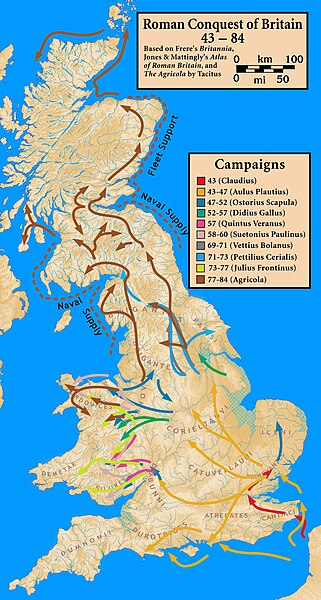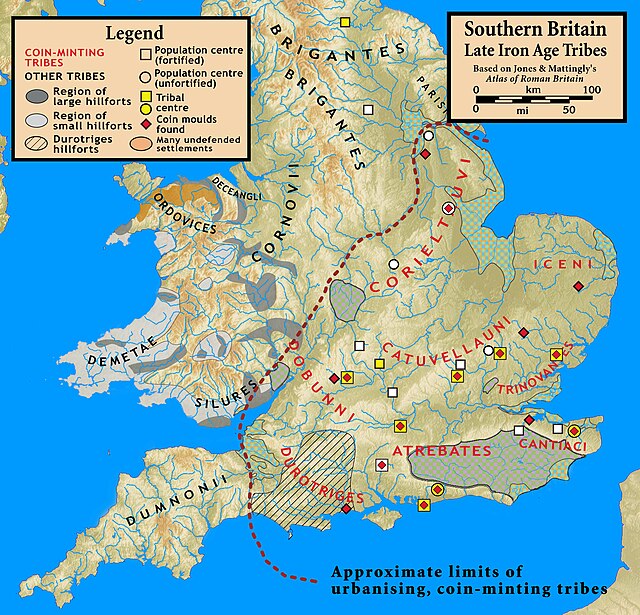Legio IX Hispana, also written as Legio VIIII Hispana, was a legion of the Imperial Roman army that existed from the 1st century BC until at least 120 AD. The legion fought in various provinces of the late Roman Republic and early Roman Empire. The nickname "Hispana" was gained when it was stationed in Hispania under Augustus. It was stationed in Britain following the Roman invasion in 43 AD. The legion disappears from surviving Roman records after c. 120 AD and there is no extant account of what happened to it.
Memorial to Lucius Duccius Rufinus, a standard bearer of the Ninth Legion (LEG VIIII), in the Yorkshire Museum, York
A stamp of the Ninth legion from the fortress at Caerleon in south Wales.
The last definite attestation to the Legion is a stone inscription from Eboracum dated 108. The inscription reads: 'The Emperor Caesar, son of the divine Nerva, Nerva Traianus Augustus, Germanicus, Dacicus, pontifex maximus, in his twelfth year of tribunician power, five times acclaimed Imperator, five times consul, father of his country, made this gateway by agency of the Ninth Legion Hispana' (Yorkshire Museum, York)
The Silchester eagle, the Roman eagle that inspired Sutcliff's novel. According to Reading Museum, it "is not a legionary eagle but has been immortalized as such by Rosemary Sutcliff."
Roman conquest of Britain
The Roman conquest of Britain was the Roman Empire's conquest of most of the island of Britain, which was inhabited by the Celtic Britons. It began in earnest in AD 43 under Emperor Claudius, and was largely completed in the southern half of Britain by AD 87, when the Stanegate was established. The conquered territory became the Roman province of Britannia. Attempts to conquer northern Britain (Caledonia) in the following centuries were not successful.
Roman conquest of Britain, showing the dominant local tribes/kingdoms conquered in each area
Southern British tribes before the Roman invasion
Campaigns under Aulus Plautius and the British tribes
Roman campaigns from AD 43 to 60








